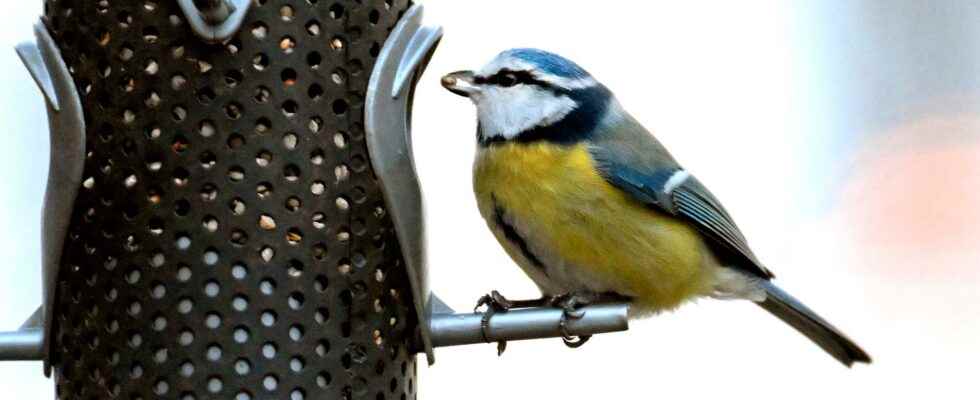Published: Less than 40 min ago
Blue tits are smarter than many other small birds, shows a study from Lund University. Goshawks are even smarter, and the smartest of all birds are the ravens.
Few people would throw themselves over the food at the Nobel dinner, no matter how hungry they are. None, probably. That self-control is also shared by chimpanzees and ravens, and precisely self-control is a common metric for measuring how smart animals are.
The most common way to test self-control is to put a piece of food in a glass cylinder. If the animal figures out that it has to enter from the side of the tube, without first trying to force the glass, the test is successful.
In a new impulse study from Lund University, the blue tits passed the test in half of the cases.
– It is very good for a small bird. Sparrows, for example, do about 20–30 percent, says Anders Brodin, biology professor at Lund University.
Got mealworms
In the test, the small birds were divided into three groups, with eleven birds in each. One group did the test without preparation, the second after having a transparent plate at the bottom of their cage for three days, and the third after having a transparent tube in their cage.
Just over half of the blue tits passed the test, which means they stopped and figured out how to get to the little mealworm in the tube.
But it has gone even better for the talgox. In a similar study conducted earlier, 68 percent of them passed the test. The birds for both tests were captured in the same areas and at the same time of year.
“Unusually educational”
One group stood out in particular – the falcons who had a glass tube in their cage before the test succeeded in 80 percent of the cases.
– They had learned what a glass tube is and how it works. That improvement was not found in blue tits, which really shows that the talgox is unusually docile, says Brodin.
Chimpanzees and ravens stand out in this type of testing – they both have 100 percent test scores. Other small birds that have been tested before are between 20 and 40 percent.
The study is published in the scientific journal Royal Society Open Science.
Facts
Blue tit
The blue tit is about twelve centimeters long. It is blue at the top of the head and on the wings. The chest and belly are yellow, with a black streak under the belly. The face is white with a black band running across the eye.
Blåmesen is found in almost all of Sweden except in the far north. It breeds in deciduous forests, mixed forests and in gardens. Most often, the blue tit stays in Sweden over the winter. Then it often stays in areas with reeds, where it eats insect larvae and pupae. It also likes to visit bird tables.
The blue tit builds a nest in a tree hole or a birdhouse, which it lines with moss, grass, hair and feathers on the inside. The female lays 10–12 eggs that are about 1.5 centimeters long and white with reddish-brown spots.
The blue tit mainly eats insects and insect larvae. Especially in winter, it also eats seeds, berries and fat.
Source: The National Encyclopedia
Read more
